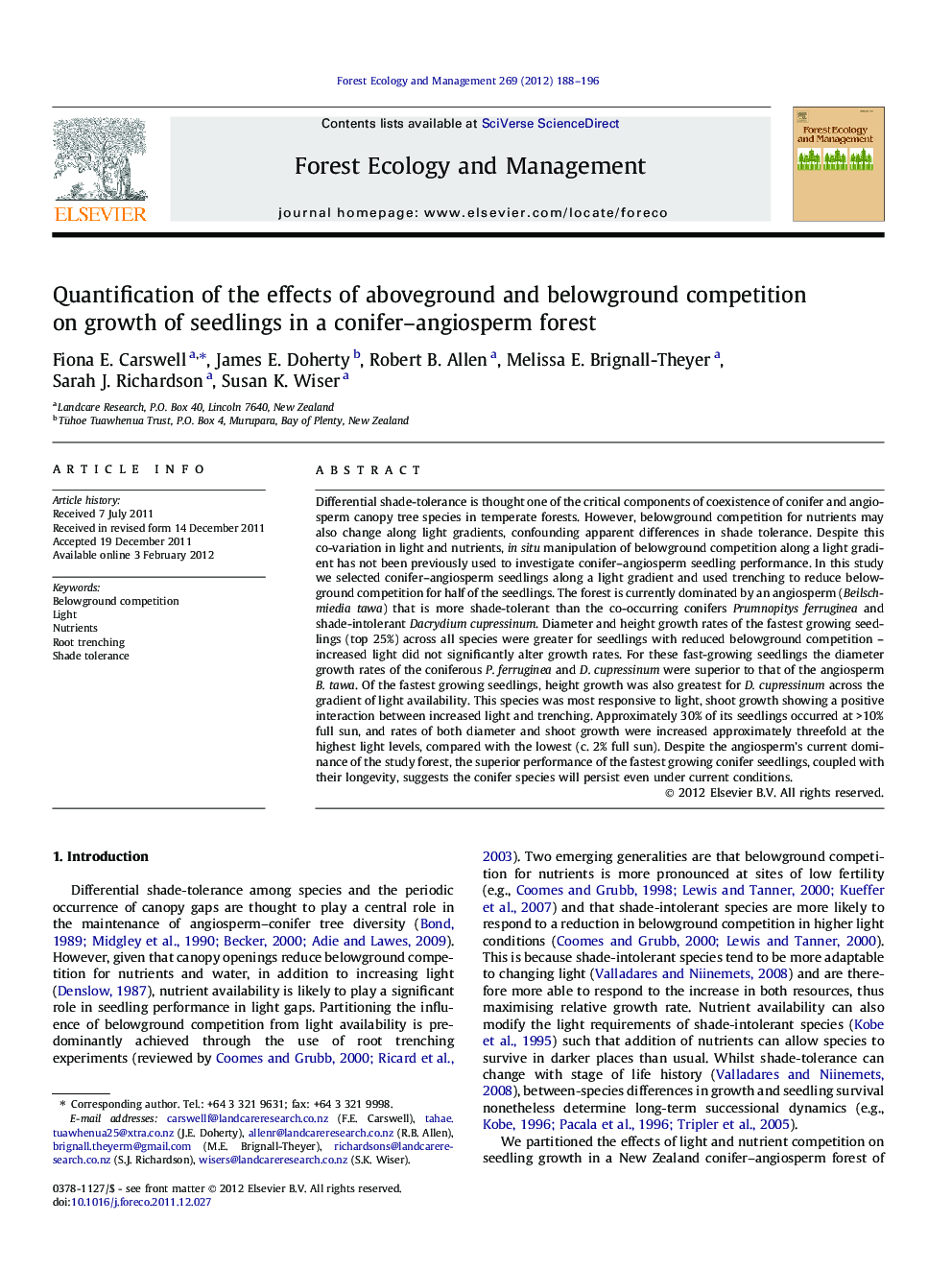| Article ID | Journal | Published Year | Pages | File Type |
|---|---|---|---|---|
| 87455 | Forest Ecology and Management | 2012 | 9 Pages |
Differential shade-tolerance is thought one of the critical components of coexistence of conifer and angiosperm canopy tree species in temperate forests. However, belowground competition for nutrients may also change along light gradients, confounding apparent differences in shade tolerance. Despite this co-variation in light and nutrients, in situ manipulation of belowground competition along a light gradient has not been previously used to investigate conifer–angiosperm seedling performance. In this study we selected conifer–angiosperm seedlings along a light gradient and used trenching to reduce belowground competition for half of the seedlings. The forest is currently dominated by an angiosperm (Beilschmiedia tawa) that is more shade-tolerant than the co-occurring conifers Prumnopitys ferruginea and shade-intolerant Dacrydium cupressinum. Diameter and height growth rates of the fastest growing seedlings (top 25%) across all species were greater for seedlings with reduced belowground competition – increased light did not significantly alter growth rates. For these fast-growing seedlings the diameter growth rates of the coniferous P. ferruginea and D. cupressinum were superior to that of the angiosperm B. tawa. Of the fastest growing seedlings, height growth was also greatest for D. cupressinum across the gradient of light availability. This species was most responsive to light, shoot growth showing a positive interaction between increased light and trenching. Approximately 30% of its seedlings occurred at >10% full sun, and rates of both diameter and shoot growth were increased approximately threefold at the highest light levels, compared with the lowest (c. 2% full sun). Despite the angiosperm’s current dominance of the study forest, the superior performance of the fastest growing conifer seedlings, coupled with their longevity, suggests the conifer species will persist even under current conditions.
► Seedlings of shade-tolerant angiosperm grew more slowly than co-occurring conifers. ► Across all seedlings growth was more responsive to light than trenching. ► Fastest growing seedlings more responsive to trenching than light. ► Conifers will persist even under prevailing current conditions.
